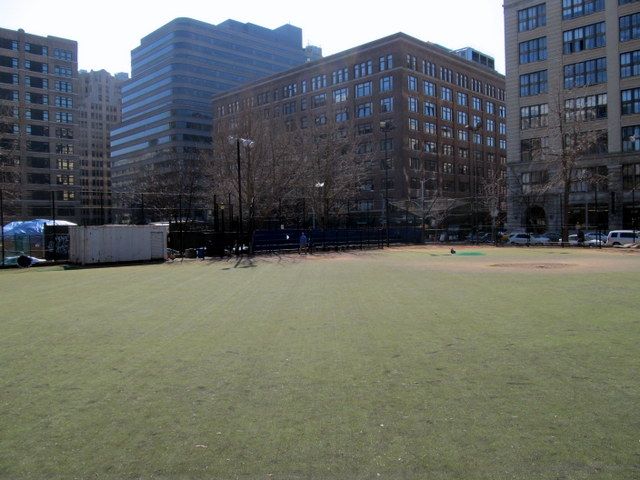Last-Minute NYC Holiday Gift Guide 🎁
We’ve created a holiday gift guide with presents for the intrepid New Yorker that should arrive just in time—


 Photo by Benjamin Waldman
Photo by Benjamin Waldman
For much of the twentieth-century, New Yorkers utilized their parks for active pursuits. Ball fields and concrete slabs replaced flora and fauna. This era has begun to fade into the history books with new parks such as the High Line and the Hudson River Greenway that extol the virtues of passive pursuits. One example of a masterpiece lost to the concrete jungle is James J. Walker Park (or Jimmy Walker Park) in the West Village. The park today features a baseball field, bocce courts, playgrounds, handball courts, and an adjacent Keith Haring decorated swimming pool.
But the park once contained a beautiful Italianate sunken garden, lagoon, perimeter walk, and gazebo, all designed by the firm Carrere and Hastings, most known for the New York Public Library and The Cunard and Standard Oil skyscrapers downtown. And even before the park was created in 1895, the land was once St. John’s Cemetery, the burial ground for Trinity Church. While the graves were supposedly relocated to 155th and Broadway, the Daytonian and Manhattan blog claims that most were not: “under the feet of scores of children playing ball and frolicking in a water spray, approximately 10,000 bodies lie forgotten.”
Carrere and Hastings were proponents of Beaux-Arts style of architecture and the City Beautiful Movement. They both studied at the Ecole Nationale Superieure des Beaux-Arts in Paris, and worked at the firm of McKim, Mead, and White before establishing their own firm. Along with McKim, Mead, and White, Carrere and Hastings helped transform New York City thereby enabling it to rival the capitols of Europe. Their neo-classical architecture raised the status of the environment in which their work was situated. From the New York Public Library to Hudson Park, their additions enhanced the cityscape. Unfortunately, the City Beautiful Movement fell out of grace shortly after the turn of the century. As a result, Carrere and Hastings’ designs began to be viewed as outdated.
In 1903, the first changes to Carrere and Hastings’ design occurred when a playground was added to the park. This push to support active recreation was the first in a long line of renovations that saw the death of Carrere and Hastings’ unrivaled park architecture and the birth of an architecturally undistinguished, though more utilized, park. The baseball field today serves as “a fitting tribute to [Jimmy Walker] the man who legalized Sunday baseball.”
 Photo by Benjamin Waldman
Photo by Benjamin Waldman
Subscribe to our newsletter